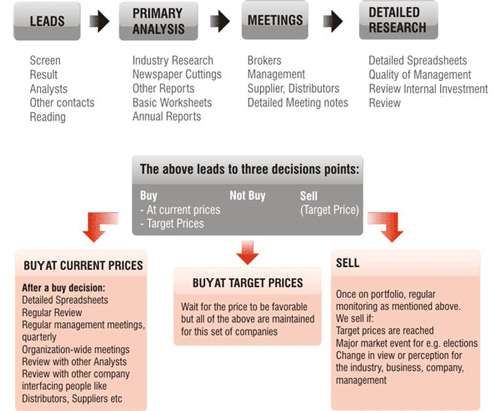Intrinsicly evisculate emerging cutting edge scenarios redefine future-proof e-markets demand line
Gallery Posts






Working Hours
| Mone - Fri: | 09:00 - 06:00 |
|---|---|
| Saturday: | 09:00 - 12:00 |
| Sunnday | 09:00 - 04:00 |
| Monday | 09:00 - 05:00 |

As a general rule, in order to be able to implement a complex software system, you need, at least, one Business Analyst of each of the four types. There are steps you need to take and skills you need to acquire before you can call yourself a data analyst. Data analysts can pull information from internal databases or external sources like financial statements or social media posts. They then combine this information into spreadsheets which they save as data tables on their computer system.

An ORA might work in marketing by determining which marketing campaigns will most effectively bring in new customers. They might work in finance by finding ways to reduce costs without compromising the quality of service or products. Market research analysts gather information about consumers’ buying habits, preferences and behaviours through surveys or focus groups so companies can develop marketing strategies that appeal to their target audience.
She probably has an MBA, probably very good Excel skills, Access skills, may know a little bit of SAS, SPSS. She probably has a title of Financial Analyst, or Marketing Analyst, or Sales and Operations Analyst, and plays a lot of different roles within the organization. Now when they have a question, it’s her job to get the answers, usually in a short period of time. A standard job in the IT field, network analysts design and examine computer networks that entities use. A network analyst is typically tasked with creating a network system that the company will use while maintaining that system and providing technical support.

Tax analysts help companies and high-wealth individuals file tax returns, ensuring that they are in compliance with local, state, and federal laws. This includes collecting and preparing tax data, reviewing returns, performing tax research, and maintaining records. They find ways to reduce tax payments and ensure all tax laws are being adhered to. Tax analysts are highly detail-oriented professionals who use a strong grasp of mathematics and knows how to manage all tax paperwork for their company or client. An economic analyst discerns potential outcomes of economic or financial decisions made by corporate executives or government legislators. In this profession, you’ll generally perform research and gather data for microeconomic analysis, usually about a specific industry.
As the business environment evolves, the role of a Business Analyst (BA) has undergone considerable transformation. From being traditionally seen as a bridge between IT and business, to now playing a crucial role in strategic decision making, types of analyst business analysts have expanded their influence within organizations, big and small. Geospatial analyst gathers, manipulates and displays geographic information system (GIS) data and images including GPS and satellite photographs.
They define the functionality of products, prioritize the requirements, and define the extent to which these requirements must be applied. This is a relatively new and increasingly popular type of Business Analyst, employed on major Scrum-driven projects. IT Business Analysts, often, hold an IT university degree and have a background in Software Engineering, or Technical Writing.
The role of a business analyst is to act as a bridge between different stakeholders in a company, facilitating communication and solution development. Business analysts rely on project management skills and quantitative and technical skills to identify areas of high and low performance. In pursuing a data analyst career path, acquiring strong organizational skills to help keep data projects in order is also important. As with all analyst roles, problem-solving skills are essential for data analysts to view problems from multiple angles and uncover creative solutions. An HR analyst analyzes an organization’s data to identify trends and improve efficiency. They use their analytical skills to develop reports, make recommendations, and implement solutions.
This rigorous process limits a typical sell-side analyst to two or three industries and about 10 to 15 companies. Unlike Business Analysts of the other types, Business Intelligence Analysts work with the data, generated by a client enterprise, and not with the requirements, gathered from the client’s business stakeholders. They must be well-versed in the client’s business domain and well-aware of the current market trends within this business domain.
While your prospective salary depends on the industry you will be working in, the pay is very competitive compared to most roles. A career in data analysis is promising, and, as mentioned, the opportunity of moving from one industry to another is highly possible. There is great demand for analysts in the year ahead, so for professionals who wish to try out a new career path, or current analysts looking to change their role, this post might be helpful for you. Let’s discuss analyst roles that 2023 has to offer and how being an analyst provides career satisfaction and flexibility. This piece also aims to help you understand whether an analyst role is truly right for you. IT systems analysts work with IT professionals to ensure that computers and software are working correctly.
They perform maintenance on existing systems and install new software and hardware when necessary. This role requires a high level of technical knowledge because most businesses rely heavily on technology for operations. Designing and updating an organization’s IT systems is the responsibility of functional architects, also referred to as IT architects and functional business analysts. A functional architect must be able to identify an IT issue and create a solution when one arises.
These programmes will help you learn how to collect, manage, and analyse data using tools such as SQL and Python.You will also get hands-on experience with real-world datasets in your lab work. And when you finish the course, you will be prepared for a decent data analytics role in any industry. A control analyst is a professional who is responsible for identifying weaknesses in the work process of an organization and implement methods to minimize risks. Control analysts are required to supervise the process for incident reports and provide technical guidance to their personnel. They must prepare monthly general ledger account analysis and balance sheets reconciliations that are according to the generally accepted accounting principles (GAAP).
A result of these forces is research departments cannot research smaller companies that do not have a potential investment bank deal in the pipeline. Couple this with the fact that research departments drop coverage rather than issue “sell” reports, and you’ll get the perception that analysts only issue “buy” recommendations. It also entails analyzing the company’s publicly traded peers to better understand the differences in operating results and stock valuations. This approach is called fundamental analysis because it focuses on the company’s fundamentals.

The average yearly income for a functional architect in India is INR 20 LPA. Business administration and information technology are fields of expertise for IT business analysts. A business analyst in an IT company performs the duties of coordinating IT with the executive branch, enhancing the caliber of IT services, and assessing business requirements.
This number will vary based on seniority, the size of the firm, and the skill of the analyst. The objectivity of research reports is a major question asked of both the large Wall Street firms and the indies. Can an indie provide an objective research report if it is paid by the subject company?
They then analyse this information and present it to management so they can make informed decisions on improving the company’s processes or implementing new policies. One of the roles of business analysts in agile projects is to create documentation that lays out how users will interact with a product or service while also explaining why they need it. This documentation should be easy for stakeholders to understand, so everyone can make informed decisions about where things go. We’ll examine the varying responsibilities, required skills, and potential career paths of each type of business analyst. A resource analyst is responsible for conducting data and statistical analysis, analyzing trends research, and identifying cost-reduction opportunities that would generate revenues and increase profits. Resource analysts evaluate budgeting and financial transactions and implement strategical methodologies to improve business operations, project management, and customer relationships.
Operations analysts, which the BLS categorizes as operations research analysts, earned a median annual salary of $86,200 as of May 2020. Operations research analysts working in the federal government earned a median annual salary of $119,720, whereas those working in professional, scientific, and technical services earned a median annual salary of $85,950. The median annual salary for financial analysts was $83,660 as of May 2020, according to the BLS. According to the BLS, the positions for financial analysts are expected to grow by 6% between 2020 and 2030. Sometimes, the smart strategy seems to involve taking the path of least resistance.
Large data sets contain information essential for making reliable, data-driven business decisions. Companies that want that extra competitive advantage need someone to collect, analyze, and apply data sets in constructive ways. In a business world that relies on digital files and communications, security is a must. An intelligence analyst provides security advice by gathering, analyzing, and interpreting data about the security of a business. According to The Street, financial analysts at Wall Street investment firms, on average, make between $180,000 to $300,000 per year.
The global emission control catalyst market is expected to reach an estimated $55.8 billion by 2028 with a CAGR of 6.5% from 2023 to 2028.
Posted: Mon, 07 Aug 2023 11:41:00 GMT [source]
Indies play an important role in today’s market by providing research on small and micro-cap stocks ignored by traditional brokerage research departments. Wall Street has become myopic, focused on big-cap stocks and pleasing big institutional investors. Analysts fall in the basic categories of sell-side analysts, buy-side analysts, and independent analysts. However, not all System Analysts are skilled to handle the entire scope of work, performed during this stage. This happens because some of them may not be trained or sufficiently qualified to handle integration and transition requirements, which, usually, arise when large-scale enterprise projects are implemented. Those System Analysts, who can be entrusted with handling such requirements, must have a good grasp of API, XML, JSON and ESB system integration techniques.
Cybercrime is a hot topic, and cyber security professionals are in huge demand. Information security analysts protect organizations from cybercriminals by interpreting security data and monitoring IT networks and systems. If you’re interested in ethical hacking, you’ll like this position, as it usually entails finding weaknesses in systems and eliminating them. We’re here to discuss analysis of data, learning of skills and implementation of web analytics. Next is the “Business Analyst” who was hired to crunch data on a day-to-day basis.